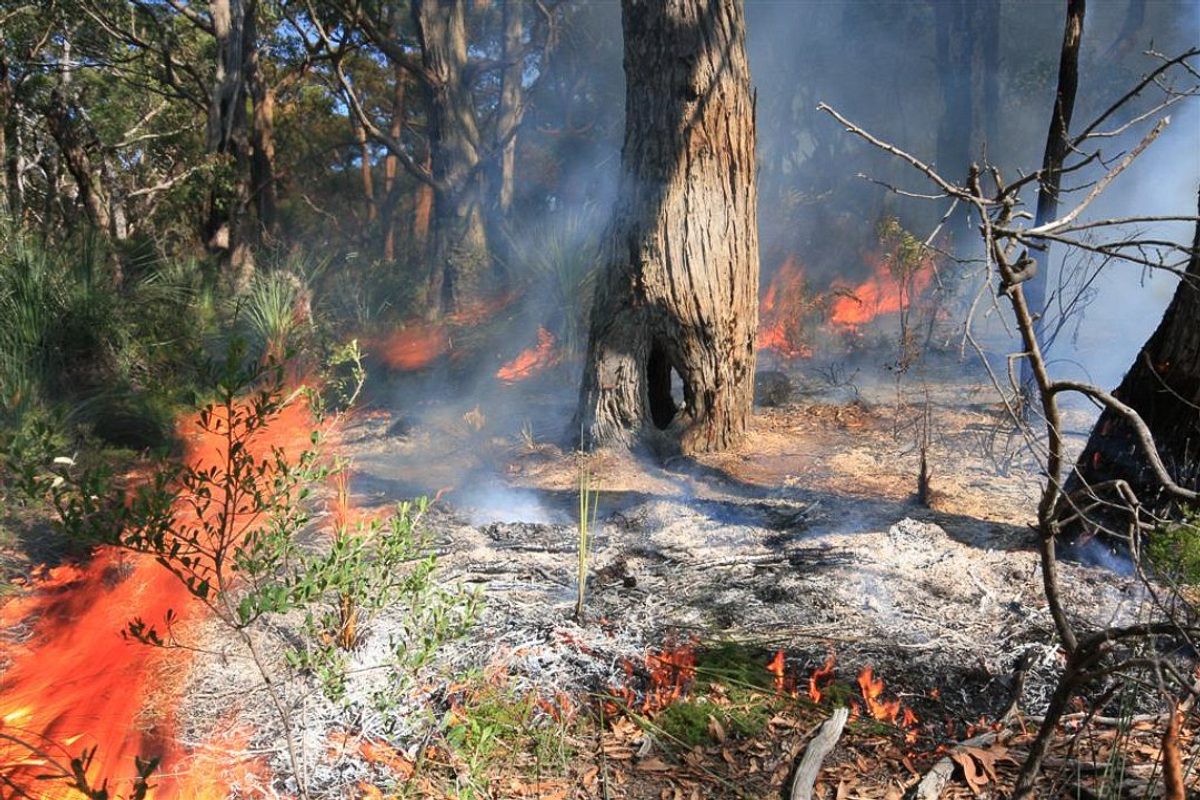
Smoke in the air during spring: learn what it could mean in South Australia
Spring is here, the weather is warming up and you might be considering a bushwalk or stroll around your neighbourhood – but you see smoke.
Before you start to worry, there could be a very logical and purposeful reason behind it.
Spring is when South Australia’s prescribed burning season kicks off. So the smoke you see in the air might be from National Parks and Wildlife Service South Australia working to reduce the threat of bushfires and improve biodiversity for our native plants and animals.
What exactly is a prescribed burn?
A prescribed burn is the opposite of a bushfire. It uses the right kind of fire in the right place, at the right time and applied in the right way, to reduce bushfire fuel in an environmentally sensitive way.
Bushfire fuel is the fine material that ignites and carries a fire. This can be grass, leaf litter, twigs, bark and other live vegetation.
It’s similar to what you would use to light a contained campfire or a fire in your lounge room fireplace – but out in the open, and under the right conditions, it can potentially start a bushfire.
Planned fires on public or private land are specially chosen to reduce fine fuel loads across the landscape and regenerate plants and animal habitats.
Reducing bushfire fuel can mean the difference between 2m and 50m high flames, on a day of heightened fire danger. In other words, a bushfire that can be fought, or one where the only option is for firefighters to retreat to a safe distance and protect people and assets where they can.
In South Australia, NPWS works in partnership with other government agencies as part of an integrated statewide bushfire mitigation program to reduce the spread and impact of bushfires on communities and the environment.

What happens to the flora and fauna that live in a prescribed burn area?
To make sure the plants and animal habitats are protected as best they can be, every prescribed burn has an environmental assessment built into it.
Staff head out to each site to inspect the plants and animals that live there, including big trees that provide crucial shelter to birds and mammals, having studied how each one responds to fire at different times of their lifecycle, in case they need to be protected.
They ensure there’s enough habitat in the landscape for wildlife to use while the burnt area regenerates and becomes habitat in the future.
A planned burn is also generally less intense and slower moving than a bushfire, smaller in size, of a shorter timeframe, and our native animals have many strategies to survive.
Some move ahead of the burn, while others shelter in the tops of trees, in crevices or burrows, or under rocks and logs. All this reduces the chance of wildlife being affected.
So depending on what they find when inspecting sites, staff might go ahead, postpone or cancel the planned burn, or work out ways to reduce any impact.
What goes into the environmental planning for a prescribed burn?
A lot of environmental planning and assessment is done before a prescribed burn. This short video takes you through the steps.
Before we burn; behind the scenes of a prescribed burn
How do I know if the smoke I’m seeing is from a prescribed burn?
If you want to know if that smoke you saw was from a prescribed burn, you can visit the website to see the a map and burn schedule or better yet, sign up for updates straight to your inbox.
If the smoke isn’t a prescribed burn, then contact the CFS for more information or phone 000 in an emergency.
Concerned?
If the smell or sight of smoke or the sight of fire or lightning triggers distress, please know this is a normal reaction after our recent experience of bushfires.
You can seek support for free professional phone counselling on 1300 032 186 or visit the Department of Human Services for more resources.
Want to know more about prescribed burning? Browse through our stories onThe how and why of planned burns,The science behind planned burns,Recovery after a planned burnand the6 stages of a prescribed burn.





